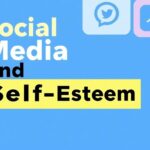Have you ever felt that nagging feeling when you scroll through social media, watching your friends attending an event you weren’t invited to, or missing out on the latest trend everyone seems to be talking about? That uneasy sensation is what psychologists call the Fear of Missing Out, or FOMO. In today’s hyper-connected world, FOMO has become a common experience, shaping how we interact with others, make decisions, and even perceive our own lives. But what exactly is FOMO, why does it affect so many people, and more importantly, how can we deal with it to live a happier and more fulfilling life? Let’s dive deep into the psychology behind FOMO, its impact on mental health, and practical ways to overcome this modern anxiety.
What is the Fear of Missing Out (FOMO)?
The Fear of Missing Out, often abbreviated as FOMO, is a social anxiety rooted in the belief that others might be having rewarding experiences from which you are absent. It’s a pervasive apprehension that you are missing out on something better, more exciting, or more fulfilling. FOMO isn’t just about social gatherings—it can relate to trends, opportunities, or life choices. The phenomenon has become increasingly prominent with the rise of digital technologies that constantly bombard us with information about what others are doing.
At its core, FOMO is about comparison. When we see curated glimpses of other people’s lives on social media, it’s easy to fall into the trap of feeling inadequate or excluded. This can lead to a cycle where we keep checking apps, attending events, or making decisions not because they truly fulfill us, but because we worry about missing out.
The Origins of FOMO
The concept of FOMO isn’t entirely new—it has always existed in human nature to want to belong and be part of a group. However, the digital age has amplified these feelings significantly. With social media platforms like Instagram, Facebook, and Twitter serving as highlight reels for people’s lives, the constant stream of “must-see” moments can feel overwhelming. The term ‘Fear of Missing Out’ was first used around 2004 by marketing strategist Dr. Dan Herman, but it gained prominence in psychological circles and popular culture in the 2010s.
Our brains are wired to seek rewards and social validation, which explains why FOMO can be such a powerful motivator. When we witness others having fun or achieving success, our brains release dopamine, sparking feelings of happiness. Conversely, missing out can trigger feelings of sadness or low self-esteem.
How FOMO Manifests in Everyday Life

FOMO isn’t just a fleeting feeling; it can influence many aspects of our lives, from the way we spend money to how we interact with others. Here are some common ways FOMO manifests:
- Social Media Addiction: Constantly checking notifications, scrolling endlessly, and comparing your life to others.
- Overcommitment: Saying yes to too many events or activities just to avoid feeling left out.
- Impulsive Decisions: Making hasty choices to seize opportunities that may not align with your goals simply out of fear of missing out.
- Negative Emotional Impact: Feelings of anxiety, envy, or loneliness when perceiving others having more fun or success.
For example, you might attend a party you aren’t excited about simply because you see everyone else going and fear missing a “great time.” While this might seem harmless, over time, these choices can lead to stress and burnout.
FOMO and Mental Health
It’s important to recognize how FOMO can negatively impact your mental well-being. Several studies have linked FOMO with increased levels of anxiety, depression, and overall life dissatisfaction. One reason is that FOMO can create a persistent sense of inadequacy—constantly feeling that your own experiences are less meaningful compared to others’.
Moreover, the addictive nature of digital devices means that FOMO can become a vicious cycle. The more you check social media to alleviate your fear, the more you might be reminded of what you’re missing. This cycle can perpetuate feelings of stress and reduce your ability to enjoy the present moment.
Who Is Most Affected by FOMO?
While FOMO can affect people of all ages, certain groups are more vulnerable. Research shows that young adults and teens are especially prone due to their intense social lives and frequent use of technology. The desire for peer approval and social belonging is at its peak during adolescence and early adulthood, making these groups highly susceptible.
However, FOMO is not limited to the young. Professionals, parents, and even retirees can experience FOMO related to career opportunities, family activities, or lifestyle trends. The key factor is how much one’s sense of self-worth depends on external validation.
Demographic Breakdown of FOMO Susceptibility
| Age Group | Common FOMO Triggers | Typical Behaviors |
|---|---|---|
| Teens (13-19) | Social parties, online trends, peer approval | Constant social media use, attending events, fear of exclusion |
| Young Adults (20-30) | Career opportunities, travel, social events | Overcommitting, multitasking, impulsive spending |
| Adults (30-50) | Professional networking, family activities, lifestyle upgrades | Social comparison, juggling commitments, anxiety |
| Older Adults (50+) | Social engagement, health trends, travel | Following trends, social isolation concerns, seeking inclusion |
Practical Strategies to Overcome FOMO

The good news is that you can address your FOMO and regain control over your life. Below are some practical, easy-to-implement strategies that can help you manage and overcome the fear of missing out.
1. Practice Mindfulness and Gratitude
One of the best ways to combat FOMO is by grounding yourself in the present moment. Mindfulness encourages you to appreciate your current experiences rather than dwelling on what you might be missing. Keeping a gratitude journal where you list things you’re thankful for can shift your focus from scarcity to abundance.
2. Limit Social Media Usage
Since social media often triggers FOMO, setting boundaries around your usage can be highly beneficial. Consider using apps that track screen time, turning off non-essential notifications, or designating specific times of day to check your feeds. When you reduce constant exposure, the urge to compare decreases.
3. Set Personal Priorities and Boundaries
Ask yourself what truly matters to you. It’s okay to say no to invitations or opportunities that don’t align with your values or goals. By defining your priorities, you can make decisions based on genuine interest rather than external pressure.
4. Focus on Quality over Quantity
Rather than trying to do everything, focus on fewer activities but engage in them deeply. This approach helps build meaningful experiences and memories that fulfill you more than superficial participation.
5. Develop Self-Compassion
Understand that it’s human to feel left out sometimes, and it doesn’t mean you’re missing out on your whole life. Be kind to yourself when you experience FOMO, and avoid harsh self-judgment. Positive self-talk can reduce anxiety and build confidence.
The Role of Technology in FOMO

Technology, particularly smartphones and social networks, has undeniably expanded the scope of FOMO. With instant access to an endless stream of real-time updates, we become hyperaware of the activities, successes, and social lives of others. The curated nature of social media means we’re often seeing the best moments of people’s lives, which rarely represent the full picture.
Interestingly, many platforms leverage the psychology of FOMO to keep users engaged. Features like stories that disappear after 24 hours, “live” videos, or the latest trends encourage constant connection and participation. This business model depends heavily on users not wanting to miss out.
However, technology can also be used positively to reduce FOMO. There are apps designed to encourage digital well-being, promote mindfulness, and help users disengage when necessary. Learning to use technology intentionally rather than reactively can make a big difference in how FOMO affects your life.
How to Support Others Experiencing FOMO
If someone you care about is struggling with FOMO, there are ways you can offer support. Listen empathetically without judgment, and share your own experiences to normalize the feeling. Encourage them to take breaks from social media and focus on activities that bring genuine joy.
You might also suggest engaging in shared experiences that strengthen real-world connections. Sometimes, simply spending quality time with friends or family in person can alleviate the isolation and anxiety associated with FOMO. Remember, fostering a culture of openness and acceptance helps create environments where people feel included without pressure.
Helpful Tips for Supporting Others
- Encourage open conversations about feelings and insecurities.
- Invite them to offline activities that align with their interests.
- Help set realistic expectations about social media portrayals.
- Practice patience and remind them that it’s okay to miss out sometimes.
Unpacking the Positive Side of FOMO
While FOMO is usually discussed in negative terms, it isn’t entirely bad. A moderate awareness of opportunities and social happenings can motivate us to try new experiences, stay connected, and grow personally. For some, FOMO drives creativity, social exploration, and ambition.
The key is balance. When FOMO leads to positive action without causing stress or guilt, it can be a useful nudge towards enriching your life. Understanding your motivations behind FOMO-related feelings can help distinguish between healthy curiosity and harmful anxiety.
Summary Table: FOMO Effects and Solutions
| FOMO Effect | Description | Practical Solution |
|---|---|---|
| Excessive Social Media Use | Compulsive checking and comparing on platforms | Set time limits and create tech-free zones |
| Overcommitment | Agreeing to too many activities to avoid missing out | Prioritize important events and learn to say no |
| Anxiety and Stress | Feeling overwhelmed by perceived gaps in experience | Practice mindfulness and self-compassion |
| Decreased Life Satisfaction | Feeling unfulfilled despite many activities | Focus on quality experiences and gratitude |
Conclusion
The Fear of Missing Out (FOMO) is a modern challenge fueled largely by our hyper-connected digital world, yet it taps into a timeless human desire for belonging and validation. Recognizing what FOMO is and how it manifests empowers us to take control, rather than letting this anxiety dictate our choices. By practicing mindfulness, setting priorities, limiting social media exposure, and embracing self-compassion, we can reduce FOMO’s influence and create a more balanced, fulfilling life. Remember, nobody can do everything or be everywhere, and that’s perfectly okay. The key lies in appreciating your unique journey and finding joy in the present moment, rather than chasing every fleeting opportunity that comes your way.





















Интересно, как многие из нас постоянно боятся что-то пропустить, а это совсем не помогает расслабиться. Важно уметь фокусироваться на своих приоритетах и не гнаться за всем сразу.